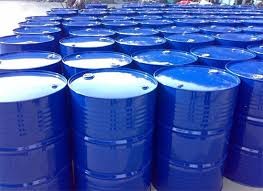Ethanol
Ethanol with the molecular formula C2H6O is a clear, colorless, volatile liquid with a pleasant smell made by fermentation of sugar. Ethanol is one of many kinds of alcohol and is the only type of alcohol that can be consumed. Apart from consumption, ethanol is used for several other purposes such as fuel to power engines, as a disinfectant (because of its bactericidal activity), as a solvent and preservative as well as serving as the primary ingredient in the preparation of alcoholic beverages.
Ethanol (CH3CH2OH) is an alcohol, a group of chemical compounds whose molecules contain a hydroxyl group, –OH, bonded to a carbon atom. When an alcoholic beverage is consumed, it passes through the stomach into the small intestine where it is rapidly absorbed and distributed throughout the body. Alcohol cannot be stored in the body and therefore, the body must metabolize it to get rid of it. It can only be metabolized in the liver, where enzymes are found to initiate the process.
Ethanol is a mood-altering drug with both pleasant and unpleasant effects. It is a clear liquid that is made by the fermentation of different biological materials.
Ethanol is metabolized in the body to provide energy and does not have any minerals, vitamins, carbohydrates, fats or protein associated with it and as a result of this, it directly contributes to malnutrition. General malnutrition is often reflected in body weight loss, mainly of adipose and muscle tissue.
Currently, the main industrial route used for ethanol production worldwide is the microbiological process, also referred as alcoholic or ethanolic fermentation.
During this process, sugars are converted into ethanol, energy, cellular biomass, CO2 and other byproducts by yeast cells. These sugars may come from different feedstock and crop wastes.
In Brazil, the main feedstock is sugarcane while the United States of America (USA) produces ethanol from corn. Sugarcane, corn and sorghum are C4 plants with high efficiency to convert atmospheric CO2 and water into sugars and polymers such as starch, cellulose and hemicellulose through photosynthesis. This process uses sun light energy to fix carbon and release oxygen into the air. Then, all CO2 resulting from ethanol burning is recycled through photosynthesis, as shown in figure (1).

figure (1)

